

Besides sales revenue, positive word of mouth and brand associations are usually testaments of a strong brand well-liked by the consumers. Traditionally, brands have been conducting periodic customer satisfaction surveys or brand equity surveys to gather consumers’ feedback on the brand. What if, brands do not have to depend on surveys to hear customers’ feedback?
New media behavior has changed the way consumers search, shop, consume and communicate. Consumers are openly sharing their experience with the brand, without being prompted, in the digital space, 24/7. Other consumers are regarding this word-of-mouth sharing as more authentic and reliable than those from the brands, turning what used to be passive consumers into active influencers. As such, brands are increasingly placing more emphasis on driving positive conversation around the brand and turning to social listening for real-time monitoring. Social listening is the process of searching the web and social media channels for mentions of your brand, competitors and other topics of interest.
United Airlines’ passenger removal incident that happened in April earlier this year is a great example of the impact of voices in the social media space. Within 48 hours, United Airlines’ saga generated 2.9 million mentions and its social sentiment plummeted by 160%. Other than monitoring online discussion for immediate crisis management, brands are also able to monitor and assess mid to long term brand equity performance in the digital space.

But what actually is “social brand equity”, and how can brands leverage it to lead their category?
With the increased spending in digital marketing, it makes perfect sense for brands to take into account their brand performance in the social space when it comes to brand equity assessment. Social Brand Equity, sometimes referred to as Social Media Brand Equity, is a measure of brand equity value that your brand has accumulated over time in the Internet social space and it changes over time depending on the interactions and experiences with the brand.
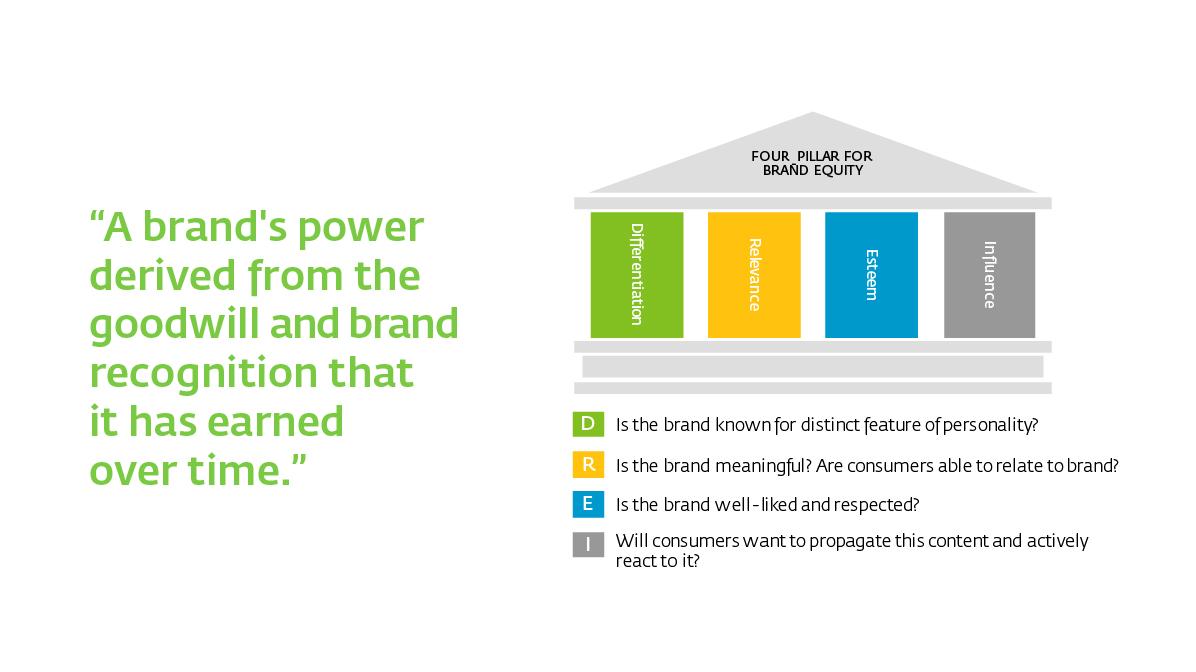
Looking solely at commonly tracked social media metrics like number of fans and number of shares can give you a faux indication of the ROI from your ad-hoc digital marketing efforts. With social listening, unprompted discussions on the brand, competitors and/or other topics of interest could be crawled, giving you access to huge pool of data for qualitative analysis of the possible reasons behind the numbers.
Integrating social listening and commonly known social media metrics, Social Brand Equity tracking provides a more comprehensive and integrated evaluation of the brand in the digital space.
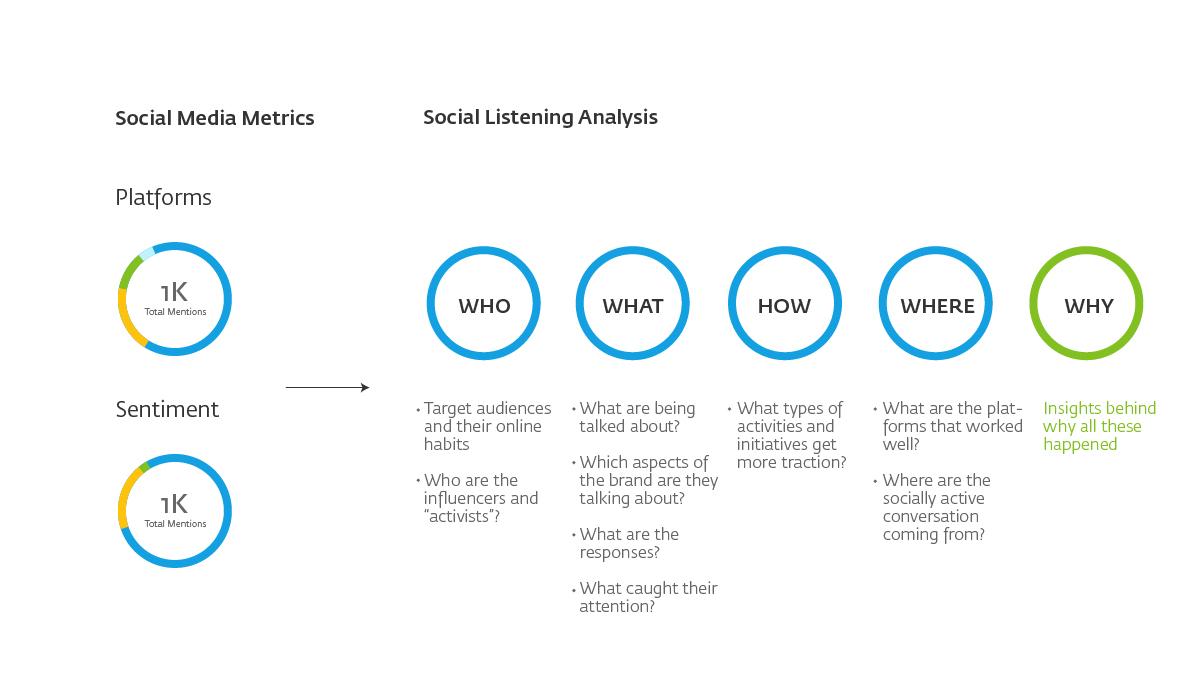
With Social Brand Equity tracking, you can extract more value beyond the numbers and metrics. Due to the nature of the research method being different from that of a traditional brand equity assessment, social listening allows for deep-dive qualitative analysis of any big-picture statistical findings. This makes Social Brand Equity tracking not only a brand equity evaluation tool that tracks annual brand KPI changes, but also a brand management tool that would reveal the cause and effect, empowering the brand with insights for future brand implementations.
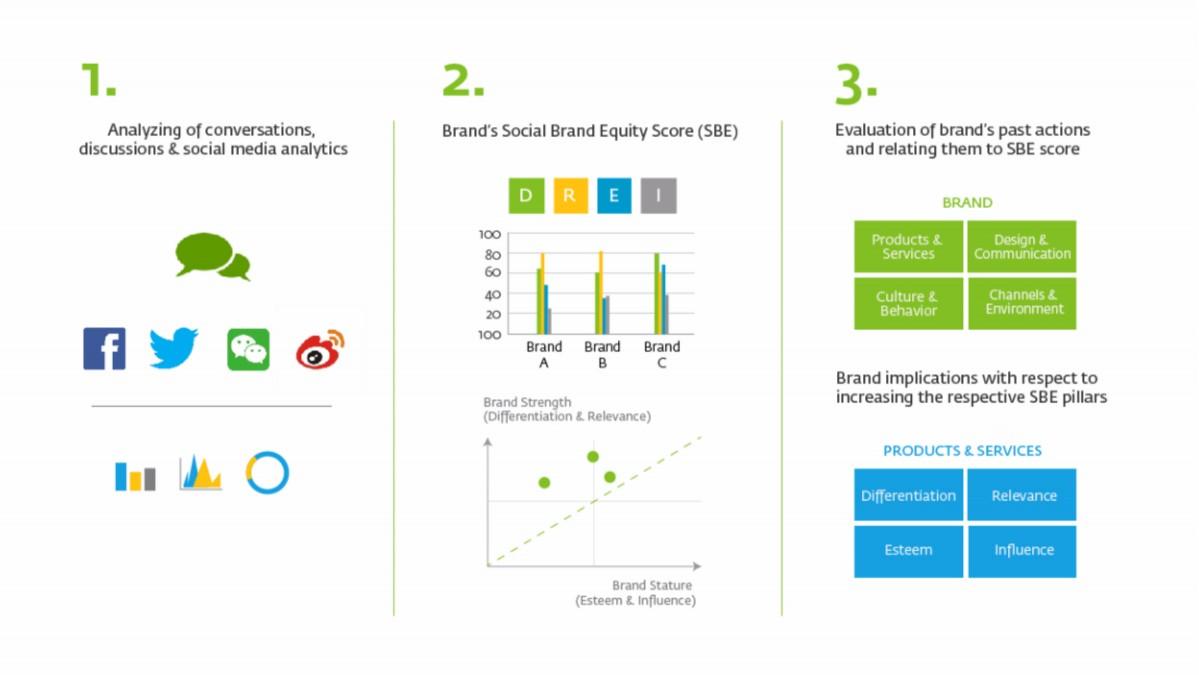
We are going to share 3 usage scenarios on how a brand can extract more value out from the social listening intelligence.
A brand needs a foundation for what drives brand perceptions.
With traditional brand equity surveys, you get assessment of the brand images that your brand is more closely related to, the associations compared to competitors and how it changes from the last assessment. That is where it ends. There is a gap in terms of knowing what have led to the current brand perceptions and therefore does not empower the brand team to make informed decision for future improvement. With social listening, word cloud is able to give an overview of the key associations of the brand, as well as deep dive analysis into the mentions that contributed to a particular brand association.
A brand needs detailed “real-time” insight directly from its audience to make an informed and actionable brand strategy
Like traditional brand equity surveys, Social Brand Equity tracking can also give insights on decision-making drivers with discussion volume as a proxy. With the assumption that people discuss more about the attributes that they have a stronger relevance and preference for, we are able to breakdown the importance of each attribute. Social listening allows you to take the analysis 1 step further to deeper analysis to exact discussion on any specific attributes, allowing you to make actionable changes to aspects of the brand that would bring the greatest impact to the brand.
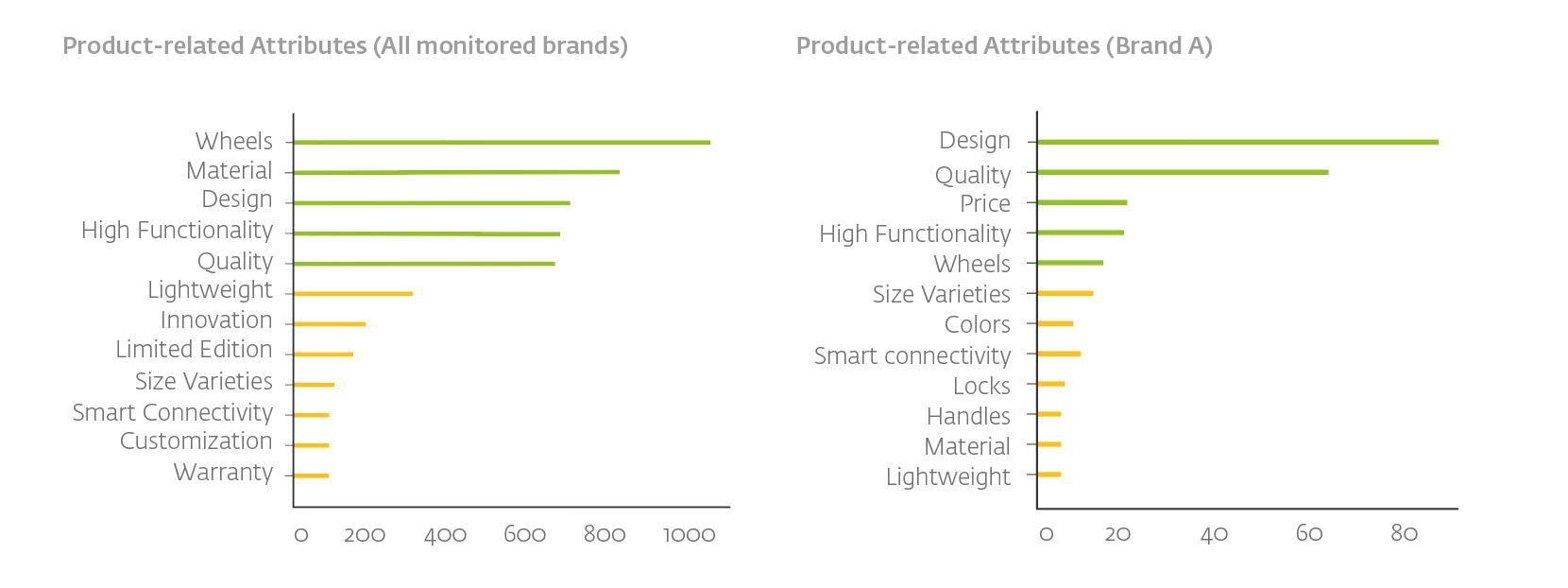
Analysis of the discussion revolving around design revealed that most netizens could not pinpoint distinctive design characteristics for brands with the exception for Rimowa and Samsonite’s Cosmo model. This insight could lead to product design implication for Brand A to develop distinctive, tangible design differences that consumers could distinguish.
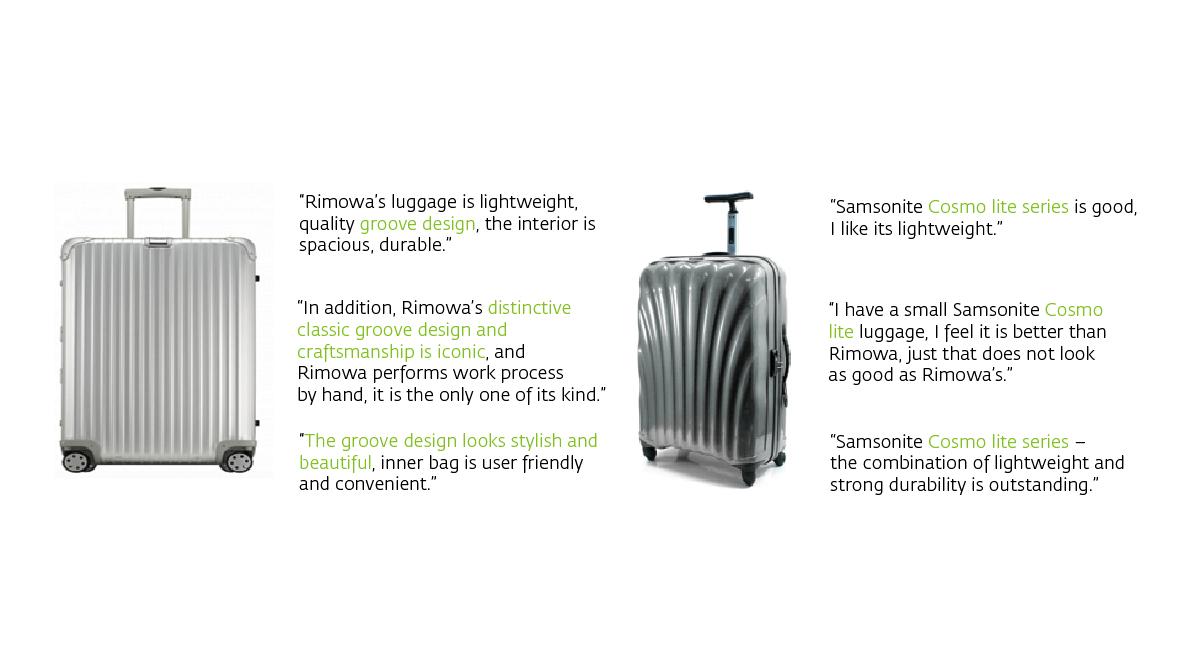
A brand seeks to continuously evaluate and iterate upon different channels and campaigns
Instead of taking social media metric changes at face value, analyze the reasons behind the numbers. Trace back to where and the reasons to the changes. If fluctuation for your brand is not drastic over time to give any indication, look at your competitors. Analyze the types of content that drove traffic and engagement and which channels were working better for them. From the example below, it revealed that generic travel destination posts are not appealing to consumers as compared to context-specific contest which not only reflects a closer relevance to consumers’ life but also engages them in 2-way communication.

Analysis into the content could also teach you on the language that you should be using when communicating with consumers on social media spaces. Besides having context relevant campaigns, Competitor B also attempted to build stronger relevance with the consumers by speaking their language – internet lingo widely used in social media communication.

A research or brand performance tracking is only useful if it empowers and leads to actionable decisions that build the brand and business over time. Metrics and KPIs would give an indication of the brand in specific aspect, but one should note that these metrics should not be viewed in isolation. Analysis should be done from various angles to have an integrated and comprehensive evaluation of the brand.
Your brand faces questions not just about volume and sentiment, but also about brand fit, cultural context, and relation with competitors – to paint a complete picture of your brand.
Start evaluating your Social Brand Equity in the right way today.
A Labbrand Group Company © 2005-2024 Labbrand All rights reserved
沪ICP备17001253号-3To improve your experience, we use cookies to provide social media features, offer you content that targets your particular interests, and analyse the performance of our advertising campaigns. By clicking on “Accept” you consent to all cookies. You also have the option to click “Reject” to limit the use of certain types of cookies. Please be aware that rejecting cookies may affect your website browsing experience and limit the use of some personalised features.